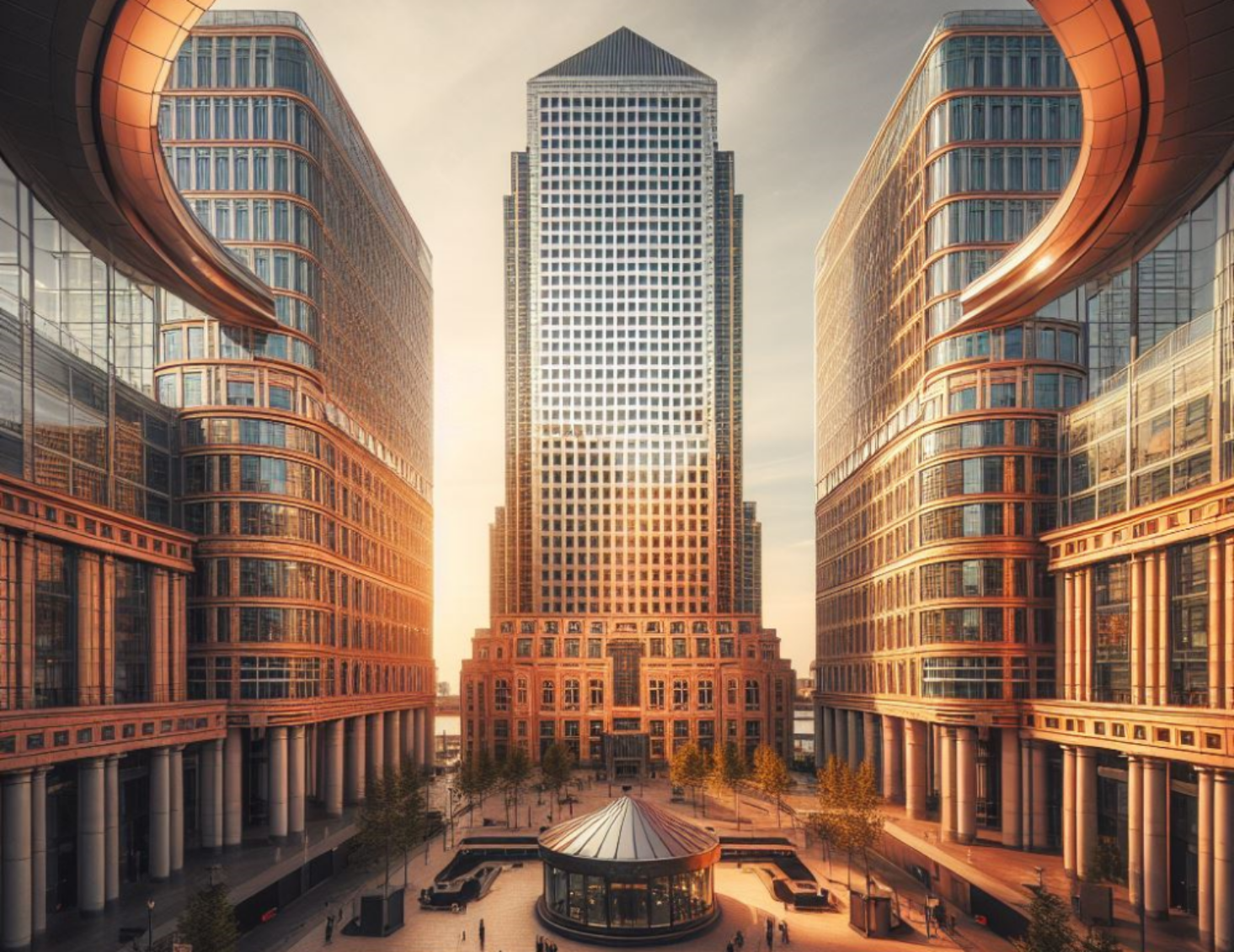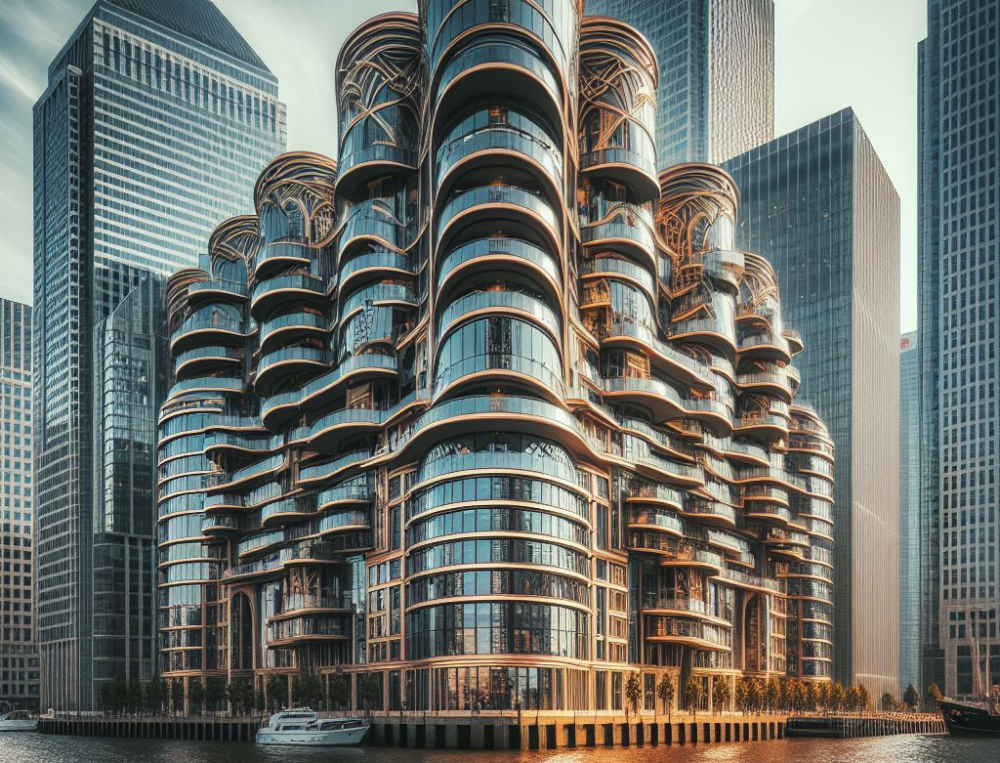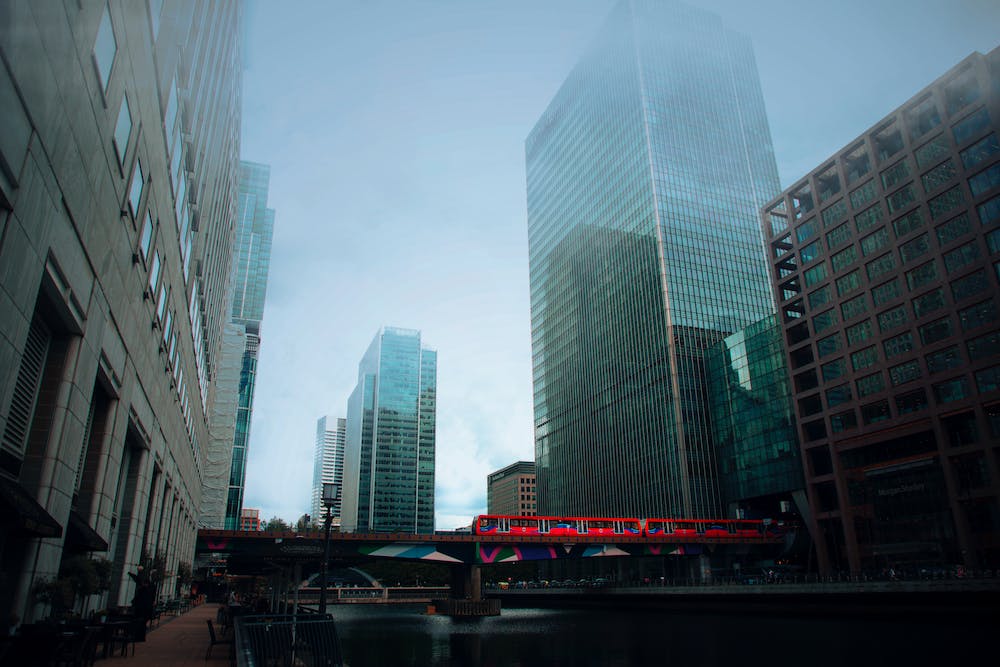
Canary Wharfs Iconic Buildings: An Architectural Tour
Canary Wharf, located on the Isle of Dogs in London, is renowned for its impressive skyline and architectural marvels. This area is a testament to modern architecture and design, reflecting the city’s continuous evolution. From the influence of modernism to the integration of art and design, the architecture of Canary Wharf is a fascinating topic to explore.
The influence of modernism is evident in the sleek and geometric designs of Canary Wharfs iconic buildings. The use of glass, steel, and concrete creates a contemporary and minimalist aesthetic. These architectural choices are inspired by the principles of functionality, efficiency, and simplicity.
Another unique aspect of the architecture in Canary Wharf is the integration of art and design. Many of the buildings feature captivating artworks and sculptures as part of their design and surroundings. This creative integration adds a touch of vibrancy and cultural richness to the area.
Within the bustling district of Canary Wharf, there are several notable buildings that stand out for their architectural significance. These include One Canada Square, the HSBC Tower, the Citigroup Centre, and One Churchill Place. Each building has its own distinctive style and contributes to the diversity of the area’s architectural landscape.
To truly appreciate the architectural wonders of Canary Wharf, an architectural tour is highly recommended. Such a tour allows visitors to explore the exterior design of the buildings, marvel at their grandeur, and appreciate the attention to detail in their construction.
Examining the interior spaces provides a deeper insight into the functionality, innovation, and craftsmanship that went into creating these structures.
The impact of Canary Wharf’s architecture extends beyond its immediate surroundings. It has played a significant role in revitalizing the Docklands area, transforming it into a thriving financial hub.
The skyline of London has been greatly shaped by these iconic buildings, creating a distinctive silhouette that is instantly recognizable.
Looking to the future, sustainable design initiatives are gaining prominence in Canary Wharf. The area is committed to incorporating environmentally-friendly practices and technologies, ensuring that future architectural projects prioritize sustainability.
There are exciting upcoming construction projects that will further enhance the architectural landscape of Canary Wharf.
The Architecture of Canary Wharf

Canary Wharf stands tall as a testament to architectural marvels. Join us as we unravel the fascinating world of its unique and awe-inspiring structures.
From the bold and futuristic influence of Modernism to the seamless fusion of art and design, we’ll take you on an immersive journey exploring the captivating architecture of Canary Wharf.
Get ready to be amazed by the striking beauty and intriguing design principles that make these buildings truly iconic.
The Influence of Modernism
Modernism has had a significant influence on the architecture of Canary Wharf. The sleek and minimalist design of the iconic buildings in the area is a testament to the influence of modernism.
The use of clean lines, geometric shapes, and glass facades is characteristic of modernist architecture. This style not only reflects the contemporary nature of Canary Wharf as a financial center but also creates a visually striking skyline.
The influence of modernism is evident in buildings like One Canada Square and the HSBC Tower, which prominently showcase the bold and progressive design principles of this architectural movement.
The Integration of Art and Design
The integration of art and design is a crucial aspect of the architectural landscape in Canary Wharf. By combining artistic elements and innovative design concepts, the buildings in this financial hub create a visually captivating environment.
Examples include the Memphis-inspired post-modern hotel and the nautically inspired riverside residence. These artistic influences bring a unique character and vibrancy to the architecture, making it more than just office spaces.
The integration of art and design enhances the aesthetic appeal and creates a distinct sense of identity for the Canary Wharf estate.
Notable Buildings in Canary Wharf

Canary Wharf’s skyline is brimming with architectural marvels that leave a lasting impression. In this section, we will take a closer look at the notable buildings that grace this bustling district.
From the iconic One Canada Square to the imposing HSBC Tower, each structure tells its own story.
Join us as we explore the Citigroup Centre and the magnificent One Churchill Place, uncovering the unique characteristics and fascinating histories behind these remarkable landmarks.
One Canada Square
One Canada Square, also known as a prominent landmark in Canary Wharf, is renowned for its impressive architecture and iconic status in London’s skyline.
Standing tall at a height of 770 feet, this skyscraper held the title of the tallest building in the UK until 2010. Situated within the Canary Wharf estate, which is a bustling financial center, One Canada Square was artfully designed by Cesar Pelli, featuring a sleek exterior and modern design elements.
Its interior houses a variety of offices, and its top floors boast a public viewing gallery that offers breathtaking panoramic views of London.
Additionally, it is fascinating to note that One Canada Square was originally constructed using a harmonious blend of glass and stainless steel.
HSBC Tower
The HSBC Tower, situated in the Canary Wharf financial center, is one of the noteworthy buildings in the area. This iconic HSBC Tower stands tall at a height of 200 meters, boasting modern and impressive architecture. It proudly serves as the global headquarters for HSBC Bank, one of the world’s largest financial services organizations.
The HSBC Tower is not just a symbol of the financial prowess and prestige associated with Canary Wharf, but also a remarkable landmark that adds to the skyline of London.
With its sleek design and prominent location, the HSBC Tower is a popular sight for visitors and locals alike.
Citigroup Centre
The Citigroup Centre, known as one of the tallest buildings in Canary Wharf, is more than just a financial center. With its sleek design and towering height, the Citigroup Centre stands out prominently among the other notable buildings in the area.
This architecturally impressive building incorporates modernist influences and art and design elements, contributing to its unique aesthetic.
Located near Poplar DLR station, the Citigroup Centre is easily accessible to both professionals and visitors.
As a significant part of the ongoing regeneration and development of Canary Wharf, this socially integrated district is proud to have the Citigroup Centre as a symbol of its progress.
Fact: The Citigroup Centre offers panoramic views of the surrounding urban landscape, showcasing its status as one of Canary Wharf’s tallest buildings.
One Churchill Place
One Churchill Place is an architecturally impressive building located in Canary Wharf. This landmark skyscraper, known as One Churchill Place, stands tall and is a symbol of the financial services that thrive in the area. It offers a mix of office spaces and is part of the Canary Wharf estate.
The building’s design blends modernism with nautical-inspired elements, reflecting its riverside location. In addition to its striking exterior, One Churchill Place also features beautifully designed interiors.
As part of a walking tour in Canary Wharf, visiting One Churchill Place provides a glimpse into the area’s rich history and the ongoing development and regeneration that has made it a socially integrated district.
An Architectural Tour of Canary Wharf

Embark on a captivating architectural journey through the iconic buildings of Canary Wharf. Discover the mesmerizing exterior designs that grace the skyline, and delve into the awe-inspiring interior spaces that hide within these architectural marvels.
Unveil the secrets behind the masterful craftsmanship and innovative concepts that breathe life into these structures.
Get ready to explore the artistry, grandeur, and ingenuity that define Canary Wharf’s architectural landscape.
Exploring the Exterior Design
Exploring the Exterior Design of Canary Wharf’s iconic buildings reveals the architectural marvels that shape this financial center. Take note of the influence of modernism and the seamless integration of art and design as you venture through.
While walking through this privately owned estate, you’ll appreciate the architecturally impressive structures and the historically interesting elements.
Keep an eye out for the floating pedestrian bridge, the nautically inspired riverside residence, and the hand-built walled dock—these are just a few of the visually captivating landmarks that define this socially integrated district.
Furthermore, the unique charm of Canary Wharf’s exterior design is enhanced by the uneven terrain and urban realm.
Examining the Interior Spaces
Examining the interior spaces of Canary Wharf’s iconic buildings offer a captivating blend of functionality and design. Here is a list that highlights key features of the interior spaces in some of these buildings:
- One Canada Square: Spacious office layout with panoramic views of London
- HSBC Tower: State-of-the-art trading floors and modern meeting rooms
- Citigroup Centre: Open-plan workspaces and vibrant communal areas
- One Churchill Place: Luxurious executive suites and innovative collaboration spaces
Examining the interior spaces of these buildings reveals their commitment to providing contemporary and versatile environments for businesses. Each building showcases unique elements that enhance productivity and foster a modern work culture.
Canary Wharf’s Impact on London’s Skyline

Canary Wharf, with its iconic buildings, has left an indelible mark on London’s skyline. In this journey through the architectural marvels, we’ll unearth the captivating story of how Canary Wharf revitalized the once neglected Docklands.
Join us as we explore how this grand development has shaped the cityscape, leaving a lasting impact on London’s urban fabric.
Prepare to be amazed by the transformation and the powerful influence Canary Wharf has had on the capital’s skyline.
Revitalizing the Docklands
Revitalizing the Docklands has been a key aspect of Canary Wharf’s development. The transformation of this once derelict area into a thriving financial center has brought new life to the docklands.
With the construction of iconic buildings and the integration of residential developments, Canary Wharf has become a socially integrated district. The revitalization efforts focused on revitalizing the Docklands have not only brought economic growth but also created a sense of community.
Walking tours around the area showcase the architecturally impressive buildings and the history of the once abandoned docklands. This revitalization project aimed at revitalizing the Docklands has not only transformed the landscape but also preserved the historical significance of the area, making it a must-visit location in London.
In the 1980s, the docklands in east London were in decline, with many of the docks abandoned and in a state of disrepair. The development of Canary Wharf revitalized the Docklands, transforming it into a bustling financial district.
The construction of iconic buildings, such as One Canada Square and the HSBC Tower, brought architectural significance to the area.
The integration of residential developments and socially integrated spaces created a sense of community within the district.
Today, Canary Wharf stands as a testament to the successful revitalization of the Docklands, attracting visitors from around the world.
Shaping the Cityscape
The architecture of Canary Wharf has played a significant role in shaping the cityscape of London. The area’s iconic buildings, such as One Canada Square, HSBC Tower, Citigroup Centre, and One Churchill Place, have become symbols of the financial center, effectively shaping the cityscape.
With their modern design and impressive structures, these buildings have revitalized the Docklands and transformed the skyline, playing a major role in shaping the cityscape of London.
The future of Canary Wharf’s architecture looks promising, with sustainable design initiatives and upcoming construction projects that will further shape the cityscape.
The integration of art and design has created an architecturally impressive and socially integrated district, contributing to the unique shape of the cityscape.
As you explore Canary Wharf, be amazed by the urban realm and the sense of community it fosters, which are integral to shaping the cityscape.
- Take a walking tour to fully appreciate the architectural beauty of Canary Wharf, which has shaped the cityscape.
- Visit the historically interesting West India Quay and explore the hand-built walled dock, which is part of the cityscape shaped by Canary Wharf.
- Experience the unique design of the floating pedestrian bridge, adding to the diverse cityscape shaped by Canary Wharf.
- Discover the nautically inspired riverside residences and the culturally diverse Poplar DLR Station that contribute to shaping the cityscape of Canary Wharf.
- Enjoy a meal at one of the many restaurants in Columbus Courtyard, while taking in the stunning views of the financial district, which is an integral part of the shaped cityscape.
The Future of Canary Wharf’s Architecture

Canary Wharf’s architectural landscape is constantly evolving, and in this section, we’ll take a closer look at what the future holds for this iconic district.
From innovative sustainable design initiatives to exciting upcoming construction projects, we’ll explore the cutting-edge developments that are shaping the future of Canary Wharf’s architecture.
Get ready to be inspired by the visionary transformations and forward-thinking approaches that are set to redefine this urban masterpiece.
Sustainable Design Initiatives
Canary Wharf, a thriving financial center, is also dedicated to implementing sustainable design initiatives.
- Green Buildings: Canary Wharf is proud to house several buildings that promote environmental sustainability, like the Columbus Courtyard offices. These offices utilize energy-efficient systems and incorporate sustainable materials.
- Renewable Energy: The district actively adopts renewable energy sources, such as solar panels and wind turbines, to reduce its carbon footprint.
- Green Spaces: Canary Wharf not only thrives as a financial hub but also provides beautifully landscaped green areas, serving as a sanctuary for both residents and workers.
Fact: Canary Wharf’s commitment to sustainable design initiatives has earned it the prestigious BREEAM certification, recognizing its outstanding environmental performance and dedication to sustainability.
Upcoming Construction Projects
Canary Wharf is brimming with upcoming construction projects that are poised to enhance the architectural landscape of the financial district. These exciting ventures not only aim to further develop the area but also cater to the needs of both residential and commercial sectors.
By adding new buildings, these projects will not only contribute to the socially integrated district but also reinforce a sense of community.
As an integral part of the Canary Wharf regeneration, these upcoming construction projects will continue to shape the cityscape while offering opportunities for offsite visits and walking tours to showcase the awe-inspiring architectural structures.
Keeping in mind a strong commitment to sustainable design initiatives, these projects will ensure that Canary Wharf remains a bustling and environmentally conscious hub of innovation.
Frequently Asked Questions
What are some key features of Canary Wharf’s iconic buildings?
Canary Wharf’s iconic buildings include Philippe Starck’s Memphis-inspired Post-Modern hotel, CZWG’s nautically-inspired riverside residence called The Cascades, Horden Cherry Lee’s residential tower Newfoundland Quay, KPF’s Bank Street office tower, and Squire and Partners’ Landmark Pinnacle residential tower. Foster + Partners’ glass towers also dominate the skyline of Canary Wharf.
Is Canary Wharf publicly accessible?
Yes, Canary Wharf is publicly accessible, but it is privately owned. It is a socially integrated area where people work, live, and play.
What is the meeting point for the architectural tour of Canary Wharf?
The meeting point for the architectural tour of Canary Wharf is Poplar DLR station, on the high-level concourse looking towards Canary Wharf.
How does YouTube work in terms of contracts and termination?
YouTube allows users to enter into contracts for various purposes, such as advertising or development. However, these contracts can be terminated on the platform. For detailed information regarding contracts, it is advised to refer to YouTube’s terms of use.
What are some cities that Canary Wharf’s architecture and urban realm compare to?
Canary Wharf, with its financial centre and urban development, is often compared to other financial districts such as the City of London.
What was the historical significance of Canary Wharf?
Originally built for commerce, Canary Wharf became a hub for the financial services industry in the 1980s. It was planned by SOM Architects as part of the Canary Wharf regeneration, aimed at accommodating financial services and competing with the City of London.





